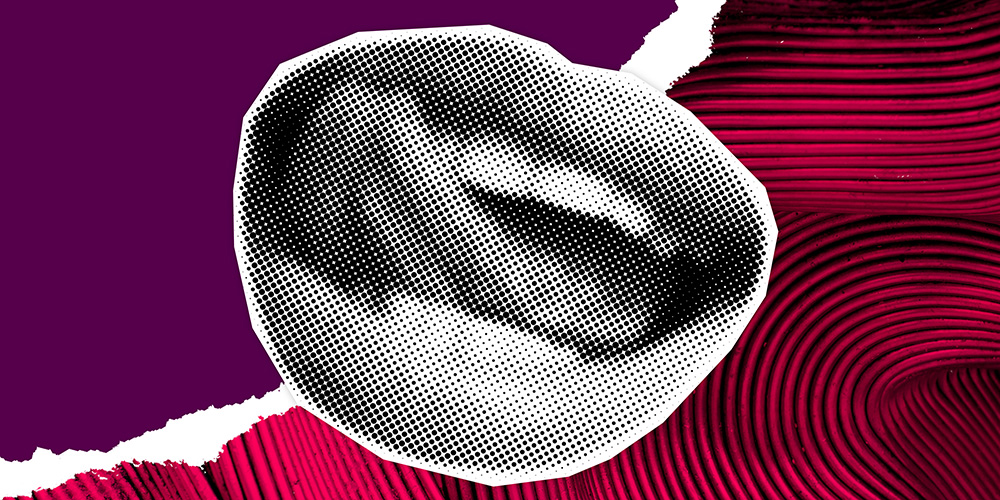Replacing lost teeth.
Text: Christel Möller
Dental implants should integrate seamlessly into the mouth and ideally last a lifetime. Scientists are researching the best material to achieve this.
It can happen to anyone: An accident, caries or inflammation of the gums can damage the root of a tooth. The tooth can’t be saved, so it has to be removed and replaced with an implant. In Switzerland alone, this happens around 90,000 times a year. With the right care, these dental implants can last more than ten years (provided there are no risk factors at play, such as pre-existing conditions, poor oral hygiene or smoking). Yet it’s still largely unclear what happens in the jawbone once an artificial tooth is implanted. How does the surrounding bone tissue and soft tissue integrate the new tooth? What properties does the material need to have to ensure the implant lasts as long as possible? Will this work for patients with impaired wound healing?
These sorts of questions are addressed in the research of nanoscientist Géraldine Guex and dentist Nadja Rohr at the University Center for Dental Medicine Basel (UZB). They study the behavior of different implant materials, coatings and surfaces — under conditions very similar to those in the mouth — and analyze how the different cells in the mouth react to an implant.
Ceramic as an alternative.
One material the two researchers are focusing on is zirconium dioxide, a ceramic alternative to titanium — currently used to make around 95 percent of dental implants. “More and more patients want a metal-free, even more aesthetic option for their artificial teeth,” explains Rohr. Gray titanium is more noticeable in the mouth than white ceramic zirconium dioxide. “Around five percent of all implants are already being made out of zirconium dioxide,” she says. Still, there’s much more to discover about the properties of this ceramic material.
The two researchers already know that the crystal structure of zirconium dioxide can change under certain conditions. “We analyze the influence of temperature, moisture and storage on the material’s properties and on interaction with different cells in the mouth,” says Guex.
Rohr’s team is investigating when and why these structural changes occur. They use tools such as a chewing simulator to mimic the conditions in the mouth. Here, they can set temperatures of between 5°C and 55°C: This simulates situations when we consume cold or hot drinks and foods. The test setup also mimics the chewing movement over multiple days or weeks. The test material needs to withstand not just different temperatures, but also large chewing forces — our chewing muscles are so strong that our teeth have to withstand loads in the region of 100 kilograms.
Looking for the ideal surface.
In a current research project in collaboration with an industry partner and the University of Applied Sciences and Arts Northwestern Switzerland (FHNW), the two scientists are studying the properties of zirconium dioxide samples. The raw material is provided by the industry partner. The research team creates thin slices, polishes them and treats them with targeted heat to structure the surface on the nanometer scale.
This method aims to simplify current production processes and give the implant the best possible properties. While Rohr analyzes material parameters such as the stability, roughness or rigidity of the various zirconium slices, Guex examines how cells from the mouth react to the differently treated surfaces of the slices. “We are looking for optimal conditions for adherent cells in the bone and gums so that the implant can integrate quickly and safely. But we also want to make it as difficult as possible for inflammation-inducing bacteria to establish themselves on the implant surfaces,” she explains.
Initial results from prior research projects show that a seemingly smooth surface that actually has many minute structures fulfils these requirements better than a rough, microstructured surface.
To approximate the conditions in the mouth even more closely and better assess how the cells react to different artificial tooth materials, Guex is also working with a doctoral researcher from the Swiss Nanoscience Institute to develop methods of cultivating cells in three-dimensional constructs.
“We are embedding the different cell types in a fibrous network of polymers and investigating the conditions under which they grow or differentiate from one another,” she explains. This enables them to examine cell physiology and better understand reactions to different materials under various conditions. “Compared with tests with isolated cell types on two-dimensional substrates, we hope to gain a picture that much better reflects real conditions in the mouth.”
In the future, she and her team would like to use models of this type to develop treatment methods that will enable even patients with impaired wound healing to retain dental implants for many years without any problems. Whatever the reason for the loss of the original tooth, the replacement should ideally last a lifetime.
Nadja Rohr is an assistant lecturer. She leads the biomaterials and technology research group in the dental technology department at the University Center for Dental Medicine in Basel (UZB).
Géraldine Guex is Assistant Professor of Oral Implantology at the University Center for Dental Medicine in Basel (UZB) and an associate research-group leader at the Department of Biomedicine, University of Basel.
More articles in this issue of UNI NOVA (May 2025).

